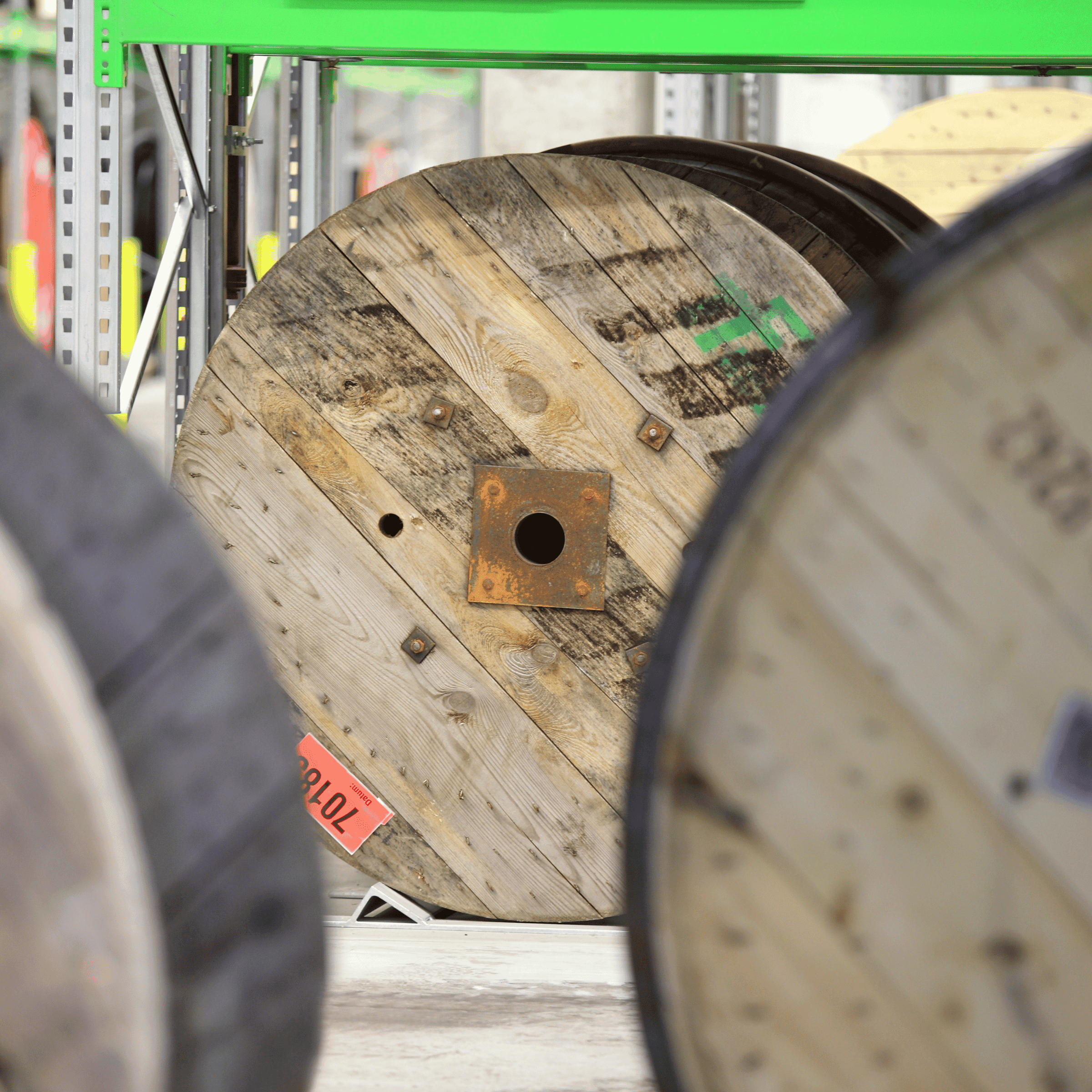Why Bonded Warehousing Matters Right Now
Global buyers are ordering earlier, retailers are tightening cash cycles, and import tariffs can lock up working capital before you’ve sold a single unit. A customs bonded warehouse lets you store imported goods in a controlled facility without paying duties, taxes, or fees until the moment of withdrawal for U.S. consumption—or never pay them at all if you re-export. For brands with long lead times, seasonal demand, or multi-market distribution, bonded warehousing is a powerful duty-deferral lever that improves cash flow and reduces landed cost risk.
What is a Customs Bonded Warehouse?
A bonded warehouse is a customs-supervised storage facility where imported merchandise can be entered and held “in bond” for a defined period (in the U.S., up to five years) without immediate duty/tax payment. While in bond, goods remain under strict inventory control and are only assessed duties when they’re withdrawn for domestic consumption—or not assessed if they’re re-exported or destroyed under customs supervision.
Core benefits:
- Duty Deferral: Pay duties/MPF/harbor fees only when goods enter U.S. commerce.
- Duty Elimination On Re-Export: No duties due if the product leaves the country.
- Cash-Flow Control: Defer customs costs until closer to revenue recognition.
- Compliance Assurance: Structured processes reduce entry errors and penalties.
Common use cases:
- Staging inventory for major launches and retail resets.
- Holding components or finished goods while final destinations are confirmed.
- Serving both U.S. and non-U.S. customers from one stock position (re-export).
- Managing seasonal or promotional surges without paying duties up front.

How Duty Deferral Works (Step-By-Step)
- Arrival & In-Bond Entry: Your shipment arrives at a port or CFS and is entered to the bonded warehouse (e.g., via an in-bond movement). No duties are paid at this point.
- Receipt & Inventory Control: Units, cartons, or pallets are received into the warehouse’s bonded inventory, serialized by lot/SKU, and tracked under customs control.
- Value-Added Services (If Allowed): Permissible operations (counting, inspection, labeling, kitting, light manipulation) are performed per customs rules.
- Withdrawal For U.S. Consumption: When you need to ship to U.S. customers or retailers, you file the consumption entry, duties/fees are calculated on the withdrawn quantity, and goods are released.
- Re-Export (Optional): If the order ships abroad, you can export directly from bond with appropriate documentation—no duties paid.
- Recordkeeping & Audits: The 3PL maintains complete stock records, entry/withdrawal documents, and audit trails to remain in full compliance.
When Bonded Warehousing Makes Sense
- High Duty Rates or Volatile Tariffs: Apparel, footwear, food products, consumer electronics, and categories with significant ad valorem rates.
- Omnichannel With Cross-Border Sales: Same inventory pool serves U.S. and international orders.
- Long Dwell or Seasonal Goods: Hold inventory months ahead of sell-through without prepaying duties.
- Testing New Markets: Stage inventory domestically, ship only what converts.
- Retail Compliance Timelines: Receive early, perform compliance prep, release by PO/ASN later.
The Financial Impact: A Simple Model
Scenario: You import 5 containers of finished goods valued at $1,200,000 with an average 8% duty rate.
- Immediate-Duty Model: Pay $96,000 in duties at entry, plus fees—cash out before sell-through.
- Bonded Model: Pay $0 at arrival. Release 20% of inventory monthly to U.S. commerce based on demand. You pay approximately $19,200 each month as you sell.
Result: You keep roughly $76,800 in working capital in month one (and scale that across seasons/launches). If 30% of the units end up shipping to Canada/EU/APAC, those units never incur U.S. duty.

Bonded Warehouse vs. FTZ vs. Duty Drawback
- Best for finished goods you may re-export or stage long-term.
- Duties deferred until withdrawal; eliminated on re-export.
- Typically simpler to start than an FTZ; strong for SKU-level control and retail readiness.
Foreign-Trade Zone (FTZ)
- Ideal for ongoing, high-volume operations; can invert duty rates on manufacturing.
- Potential weekly entry savings; strong for component assembly.
- More complex activation and operational governance.
Duty Drawback
- Post-event refund program when you export goods that previously paid U.S. duty.
- Useful for historical recoveries, but it ties up cash and requires documentation.
- Pairs well with bonded/FTZ in broader duty optimization programs.
Quick rule of thumb:
- Re-export expected? Bonded is usually the fastest win.
- Ongoing manufacturing or large continuous imports? Consider FTZ.
- Already paid duty and exported later? Pursue drawback.
What You Can Do to Goods in Bond (And What You Can’t)
Commonly permitted: Counting, inspection, sampling, repacking, relabeling, stickering/price-ticketing, poly-bagging, kitting/light assembly that doesn’t materially change the tariff classification, and retail-compliance prep.
Typically restricted: Substantial transformation that alters the tariff classification or origin; any operations outside the bonded controls without prior authorization.
Note: Permissible activities vary by jurisdiction and entry type; your 3PL should validate scope with customs before work begins.
Compliance, Documentation, And Controls
Successful bonded operations hinge on airtight documentation and system controls:
- Accurate Entries: In-bond/warehouse entries must match quantities, tariff numbers, values, and origin.
- Segregated Inventory: Bonded stock is tracked separately from non-bonded, with real-time balances.
- Withdrawal Types: Consumption, transfer, re-export, or destruction—each with specific filings.
- Record Retention: Keep entry packets, CBP correspondence, bills of lading, commercial invoices, and stock cards for the required period.
- Audit Readiness: Cycle counts, exception reporting, and reconciliation logs to satisfy customs reviews.

How A 3PL Partner Makes Bonded Simple
An experienced 3PL should provide:
- Bonded Receipt & Inventory Control: ASN-based receiving, lot/serial capture, and perpetual balances.
- Retail & Marketplace Compliance: Ticketing, carton labeling, cartonization, and routing compliance for majors.
- WMS/OMS Integrations: Shopify, Amazon, Faire, EDI (GS1-128, UCC-128)
- Flexible Release Strategies: Wave planning by PO/door date, DC/RDC allocation, and carrier optimization.
- Multi-Channel Execution: DTC pick/pack, wholesale routing, and export prep from the same facility.
- Customs Coordination: Broker collaboration, timely filings, and controlled withdrawals.
What Importers Should Prepare Before Going Bonded
- Commercial Documents: Commercial invoice, packing list, HTS codes, COO statements.
- SKU Master Data: Dimensions, weights, values, and tariff classifications at the SKU level.
- Forecasts & Release Plan: Expected dwell time, U.S. vs. export splits, seasonal peaks.
- Compliance Playbook: What operations you’ll perform in bond (labeling, kitting, etc.).
- Broker Alignment: Clear roles for entries, withdrawals, and re-exports.

Worked Example: Launch Staging with Re-Export
- Inbound: 2 containers (CIF value $480,000; duty 10%). Entered to bond; no duty paid at receipt.
- In-Bond Operations: Retail labeling, carton QA, and kitting of gift sets.
- Withdrawal Plan (90 days):
- Month 1: 35% released to U.S. wholesale → pay $16,800 duty.
- Month 2: 25% re-export to Canada/EU → no U.S. duty.
- Month 3: 40% DTC holiday push → pay $19,200 duty.
- Outcome: $48,000 of potential month-one duty is smoothed over sell-through; 25% duty permanently avoided.
Bonded Warehousing for Ecommerce and Retail Programs
- PO-Driven Releases: Time withdrawals to retailer delivery windows to avoid early duty outlay.
- DTC Surge Readiness: Keep reserve inventory in bond; release only when campaigns convert.
- Kitting & Gifting: Build kits in bond (where permitted) to preserve deferral on unsold units.
- International Split: Ship U.S. orders domestically, export the rest, and avoid paying U.S. duty on export volumes.
FAQs
How long can goods stay in a U.S. bonded warehouse?
Up to five years from the date of importation.
Can I do quality inspection and relabeling in bond?
Yes—most non-transformative operations (count, inspect, relabel, sticker, poly-bag, light kitting) are typically allowed with proper controls.
What if my HS code or value changes after arrival?
Your broker can adjust at withdrawal; accurate master data and documentation prevent rework and penalties.
Is bonded better than an FTZ?
It depends. For finished goods with meaningful re-export or long dwell times, bonded is often faster to stand up. For manufacturing or very high volumes, FTZ may deliver greater structural savings.
Can I mix bonded and non-bonded inventory?
Physically, yes—with strict segregation and WMS controls. Operationally, your 3PL should maintain clear stock separation and audit trails.
Getting Started with Bonded Warehousing
If duty spend and cash flow are priorities this year, bonded warehousing can deliver immediate value—especially if you serve multiple markets or stage inventory far ahead of sell-through. The key is choosing a 3PL that pairs bonded compliance with retail-ready execution, data-clean integrations, and granular inventory control.
How Snapl Can Help
Snapl operates bonded warehousing with tight inventory controls, retail-compliance services, and multi-channel fulfillment from the same facility. We integrate with your storefronts and marketplaces, collaborate with your customs broker, and build a release plan that matches your sell-through curve—so you defer duties until it truly makes sense to pay them.

Keep your goods compliant and your capital free.
Contact Us





